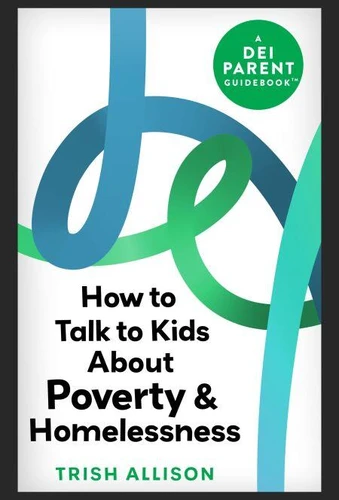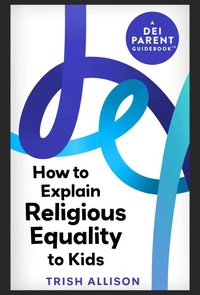Nouveauté
How to Talk to Kids About Poverty and Homelessness. DEI Parent Guidebooks
Par :Formats :
Disponible dans votre compte client Decitre ou Furet du Nord dès validation de votre commande. Le format ePub est :
- Compatible avec une lecture sur My Vivlio (smartphone, tablette, ordinateur)
- Compatible avec une lecture sur liseuses Vivlio
- Pour les liseuses autres que Vivlio, vous devez utiliser le logiciel Adobe Digital Edition. Non compatible avec la lecture sur les liseuses Kindle, Remarkable et Sony
 , qui est-ce ?
, qui est-ce ?Notre partenaire de plateforme de lecture numérique où vous retrouverez l'ensemble de vos ebooks gratuitement
Pour en savoir plus sur nos ebooks, consultez notre aide en ligne ici
- FormatePub
- ISBN8201670436
- EAN9798201670436
- Date de parution17/10/2025
- Protection num.pas de protection
- Infos supplémentairesepub
- ÉditeurJL
Résumé
*** THIS GUIDEBOOK WAS THOROUGHLY UPDATED IN 2025 *** Immediately useful, inside this guidebook you'll find step-by-step instructions for addressing children's natural curiosity about poverty and homelessness in a compassionate, informative, and age-appropriate way. With clear explanations, real-life examples, and engaging activities, this resource helps adults create a safe and inclusive environment where children (ages 6-12) can learn about these complex issues with empathy and understanding. These are the steps that we found to be most effective for getting your message across: Subtly learn your child's true opinion of poverty.
Explain the basics about poverty. Discuss poverty stereotypes. Respond to common questions from kids about poverty and homelessness. Cultivate a home environment that fosters empathy for poor people. Please note: Our guidebooks strictly adhere to American Psychological Association child development doctrines. Each book includes a comprehensive reference list and in-text citations, reinforcing our commitment to evidence-based parenting advice.
Explain the basics about poverty. Discuss poverty stereotypes. Respond to common questions from kids about poverty and homelessness. Cultivate a home environment that fosters empathy for poor people. Please note: Our guidebooks strictly adhere to American Psychological Association child development doctrines. Each book includes a comprehensive reference list and in-text citations, reinforcing our commitment to evidence-based parenting advice.
*** THIS GUIDEBOOK WAS THOROUGHLY UPDATED IN 2025 *** Immediately useful, inside this guidebook you'll find step-by-step instructions for addressing children's natural curiosity about poverty and homelessness in a compassionate, informative, and age-appropriate way. With clear explanations, real-life examples, and engaging activities, this resource helps adults create a safe and inclusive environment where children (ages 6-12) can learn about these complex issues with empathy and understanding. These are the steps that we found to be most effective for getting your message across: Subtly learn your child's true opinion of poverty.
Explain the basics about poverty. Discuss poverty stereotypes. Respond to common questions from kids about poverty and homelessness. Cultivate a home environment that fosters empathy for poor people. Please note: Our guidebooks strictly adhere to American Psychological Association child development doctrines. Each book includes a comprehensive reference list and in-text citations, reinforcing our commitment to evidence-based parenting advice.
Explain the basics about poverty. Discuss poverty stereotypes. Respond to common questions from kids about poverty and homelessness. Cultivate a home environment that fosters empathy for poor people. Please note: Our guidebooks strictly adhere to American Psychological Association child development doctrines. Each book includes a comprehensive reference list and in-text citations, reinforcing our commitment to evidence-based parenting advice.













